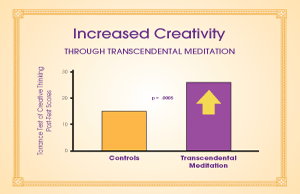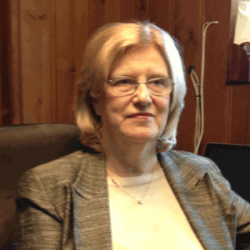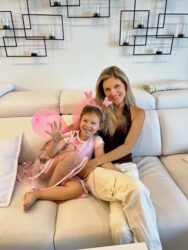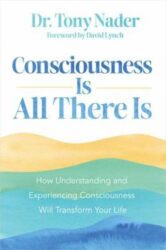Creativity Is Sharing, An Overflowing Of Fullness

“Why should we all use our creative power? Because there is nothing that makes people so generous, joyful, bold and compassionate. Because the best way to know the Truth or Beauty is to try to express it. And what is the purpose of existence Here or Yonder but to discover truth and beauty and express it, i.e., share it with others?”—Brenda Ueland, author*
“The artist, constantly using his creative impulses, continues to draw from the reservoir of creativity present in his own Being. This is how his consciousness, bathing in the fresh springs of creativity, rises to the prodigious brilliance of natural creation.”—Maharishi Mahesh Yogi, Founder, Transcendental Meditation technique
Creativity includes art, but it is much broader and deeper. It is our essential nature. It is sharing what we love with others we love. It is about overflowing from inner fullness—which requires drawing upon silent inner springs of refreshment.
My views on creativity were greatly expanded when I started meditating and heard Maharishi’s unique and inspiring insights on creative intelligence. Years later I came across a book by Brenda Ueland,* who wrote on creativity in the 1930s and 1940s. I enjoyed her exuberance, and her delightful discoveries resonated with perspectives I had heard from Maharishi. I would like to give a taste of Ueland’s observations and Maharishi’s insights concerning creativity, and how each of us can unfold our innate creative intelligence.
Ueland says the creative impulse is “a generosity…a feeling of love and enthusiasm for something, and in a direct, simple, passionate and true way, you try to show this beauty in things to others.” She explains:
If you read the letters of the painter Van Gogh you will see what his creative impulse was. It was just this: he loved something—the sky, say. He loved human beings. He wanted to show human beings how beautiful the sky was. So he painted it for them. And that was all there was to it.
Ueland writes that every human being has tremendous creative powers, untapped by most of us.
We have an inner knowing that we have great genius inside. We start out as children, “trailing clouds of glory” (Wordsworth), with an innocent spirit of creative expression. But then, she says, along comes “the army of critics with their pencils…”She encourages us to ignore the critics—including our own inner critic—and to be free and playful in our creative expression. She says, “Think of yourself as an incandescent power, illuminated… It is only by expressing all that is inside that purer and purer streams come. You do not know what is in you—an inexhaustible fountain.”
Ueland discovered that the creative process needs quietness, not drama: “I want to show you that the creative impulse is quiet, quiet. It sees, it feels, it quietly hears…. Inspiration does not come like a bolt, nor is it kinetic, energetic striving…but it comes into us slowly and quietly…”
She describes a group of children who were painting her portrait. She noticed with amazed delight that they were deeply absorbed for long periods of time, in “blissful silence…” She advises, “You should feel when writing, not like Lord Byron on a mountain top, but like a child…happy, absorbed…”
From within this quietness, Ueland observed, we have the capacity for “microscopic truthfulness,” a delicate fineness of perception and description.
You begin to see the world as you had not seen it before, to hear people’s voices and not only what they are saying but what they are trying to say and you see the whole truth about them. And you sense existence, not piecemeal—not this object and that—but as a translucent whole.
Throughout her book, Ueland refers to an expanded state of awareness—an experience of profound ease and heightened clarity—within which creativity is born. Mozart, Blake, and others describe how “full calmness and serenity” (Van Gogh) provide the internal environment for effortless creativity.
We have all experienced the opposite—how noisy mental chatter, anxiety, fatigue, or the desire to impress—cramps our creativity.
How do we cultivate the quiet, peaceful, fresh and clear state of awareness that Ueland advocates?
Ueland’s insights are reinforced by the teachings of Maharishi Mahesh Yogi, who additionally provides practical programs and in-depth knowledge for the development of consciousness.
Regarding our vast potential, Maharishi says:
Every individual has an infinite potential of creativity. But this storehouse is not fully enlivened by the current systems of education. The genius of man is hidden in the silence of his awareness in that settled state of his mind, from where every thought emerges. The nature of this state is bliss-consciousness.
Through Transcendental Meditation, we transcend the surface, noisy levels of awareness to this silent, clear reservoir of potent creativity. Maharishi says,
On a frozen level of consciousness, the flow [of creativity] is not available. Stressed minds can hardly flow. Transcendental Meditation, which releases stresses and strains from consciousness, leaves consciousness pure and crystalline and fluid and flowing.
Gradually, through regular practice, the muddy waters of our awareness become clearer. Our awareness expands, allowing for more refined perception. Maharishi says,
With such an unrestricted, unbounded awareness, we are able to penetrate into the deeper values of perception. Our perception becomes more refined.
In the purity of consciousness…we…see the ocean in a drop—that microscopic vision, that microscopic appreciation which naturally comprehends the totality on any surface value of a thing.
Maharishi also teaches that straining is counterproductive, within meditation and activity afterwards. What makes TM so unique is that the student is guided to allow her awareness to become increasingly quiet, effortlessly. Awareness expands and stress naturally dissolves, allowing for life-supporting expression in our lives.
Maharishi reverses the old notion that creativity is best suited to the suffering, striving artist. The experience of inner silence cultivates inner security and quiet joy. There is a feeling of “coming home” to our true self. Like the child who is anchored in the secure feeling of “mother is at home,” we play most freely and creatively.
Ueland made her discoveries about the nature of creativity by trusting in her own experience against all the naysayers. This brings us to a final point that Maharishi teaches—so important for us as women to learn and develop: Be Self-referral, rather than “object-referral,” which is looking outside ourselves for fulfillment or identity or approval. Go within, transcending the limitations of the small self, and expand to the source of creative intelligence, the cosmic Self. Take recourse to the cosmic Self, and from there, act spontaneously.
Regular alternation of silence, through TM, and dynamism, through activity, unfolds full enlightenment. Our awareness then shines with “translucent wholeness,” with sparkling creative intelligence. Every aspect of our lives then overflows with joyful, playful, life-supporting creative expression, which we share with those we love.
*Quotes from Brenda Ueland are from her book If You Want to Write: A Book about Art, Independence and Spirit. Graywolf Press.
Most Maharishi quotes are from The Flow of Consciousness: Maharishi Mahesh Yogi on Literature and Language, edited by Rhoda F. Orme-Johnson, Ph.D. and Susan K. Anderson, Ph.D., MUM Press http://www.mumpress.com/books/other-authors/g04.html
About the Author
Cynthia Johnson is a teacher of the Transcendental Meditation program. She holds a Master of Theological Studies from Harvard Divinity School and is a mother, wife and writer. She is a contributor to the book A Symphony of Silence: An Enlightened Vision (1st and 2nd editions) by George Ellis.





